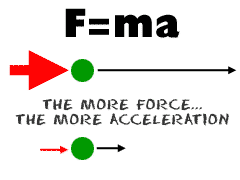A350XWB
A350-800
A350-800
Range: 15,200km
Passengers (Typical Seating): 280
Max Payload: 12.95t
Wing Span: 64.75m
Overall length: 60.54m
Height: 17.05m
Engine: 2x RR Trent XWB
Max fuel capacity: 138,000L
A350-900Engine: 2x RR Trent XWB
Max fuel capacity: 138,000L
Range: 15,000km
Passengers (Typical Seating): 325
Max Payload: 16t
Wing Span: 64.75m
Overall length: 66.8m
Height: 17.05m
Engine: 2x RR Trent XWB
Max fuel capacity: 138,000L
Engine: 2x RR Trent XWB
Max fuel capacity: 138,000L
A350-1000
Range: 14,800km
Passengers (Typical Seating): 366
Max Payload: 20.89t
Wing Span: 64.75m
Overall length: 73.78m
Height: 17.08m
Engine: 2x RR Trent XWB
Max fuel capacity: 156,000L
A380

Engine: 2x RR Trent XWB
Max fuel capacity: 156,000L
A380

Range: 15,200km
Passengers (Typical Seating): 544
Max Payload: - t
Wing Span: 79.75m
Overall length: 72.72m
Height: 24.09m
Engine: 4x GP 7200, or RR Trent 900
Max fuel capacity: 320,000L
A320
A318
Engine: 4x GP 7200, or RR Trent 900
Max fuel capacity: 320,000L
A320
A318
Range: 5,750km
Passengers (Typical Seating): 107
Max Payload: 11.1t
Wing Span: 34.10m
Overall length: 31.44m
Height: 12.56m
Engine: 2x PW6000A, or CFM56-5B
Max fuel capacity: 24,210L
A319Engine: 2x PW6000A, or CFM56-5B
Max fuel capacity: 24,210L
Range: 6,950km (with Sharklets)
Passengers (Typical Seating): 124
Max Payload: 13.2t
Wing Span: 35.80m
Overall length: 33.84m
Height: 11.76m
Engine: 2x CFM56-5B, or V2500-A5
Max fuel capacity: 30,190L
A320
Engine: 2x CFM56-5B, or V2500-A5
Max fuel capacity: 30,190L
A320
Range: 6,100km (with Sharklets)
Passengers (Typical Seating): 150
Max Payload: 16.6t
Wing Span: 35.80m
Overall length: 37.57m
Height: 11.76m
Engine: 2x V2500-A5, or CFM56-5B
Max fuel capacity: 27,200L
A321
Engine: 2x V2500-A5, or CFM56-5B
Max fuel capacity: 27,200L
A321
Range: 5,950km (with Sharklets)
Passengers (Typical Seating): 185
Max Payload: 21.2t
Wing Span: 35.80m
Overall length: 44.51m
Height: 11.76m
Engine: 2x V2500-A5, or CFM56-5B
Max fuel capacity: 30,030L
A330
A330-200
Engine: 2x V2500-A5, or CFM56-5B
Max fuel capacity: 30,030L
A330
A330-200
Range: 13,450km
Passengers (Typical Seating): 247
Max Payload: 36,4t
Wing Span: 60.30m-]
Overall length: 58.82m
Height: 17.39m
Engine: 2x PW4000, GE CF6-80E1, or RR Trent 700-]
Max fuel capacity: 139,090L
A330-300
Engine: 2x PW4000, GE CF6-80E1, or RR Trent 700-]
Max fuel capacity: 139,090L
A330-300
Range: 11,750km
Passengers (Typical Seating): 277
Max Payload: 45.9t
Wing Span: 60.30m
Overall length: 63.69m
Height: 16.83m
Engine: 2x PW4000, GE CF6-80E1, or RR Trent 700
Max fuel capacity: 97,530L
A340
A340-200
Engine: 2x PW4000, GE CF6-80E1, or RR Trent 700
Max fuel capacity: 97,530L
A340
A340-200
Range: 12,400km
Passengers (Typical Seating): 261
Max Payload: 30.8t
Wing Span: 60.30m
Overall length: 59.4m
Height: 16.80m
Engine: 4x CFM56-5C4/P
Max fuel capacity: 155,040L
A340-300
A340-500
Engine: 4x CFM56-5C4/P
Max fuel capacity: 155,040L
A340-300
Range: 13,500km
Passengers (Typical Seating): 277
Max Payload: 43.5t
Wing Span: 60.30m
Overall length: 63.69m
Height: 16.91m
Engine: 4x CFM56-5C4/P
Max fuel capacity: 140,640L
Engine: 4x CFM56-5C4/P
Max fuel capacity: 140,640L
A340-500
Range: 16,670km
Passengers (Typical Seating): 293
Max Payload: 43.3t
Wing Span:63.45m
Overall length: 67.93m
Height: 17.28m
Engine: 4x RR Trent 500
Max fuel capacity: 215,260L
A340-600
Engine: 4x RR Trent 500
Max fuel capacity: 215,260L
A340-600
Range: 14,450km
Passengers (Typical Seating): 326
Max Payload: 55.6t
Wing Span:63.45m
Overall length: 75.36m
Height: 17.22m
Engine: 4x RR Trent 500
Max fuel capacity: 195,520L
With all the information above i made this small project:
All information and images above are from Airbus.com
Engine: 4x RR Trent 500
Max fuel capacity: 195,520L
With all the information above i made this small project:
All information and images above are from Airbus.com











